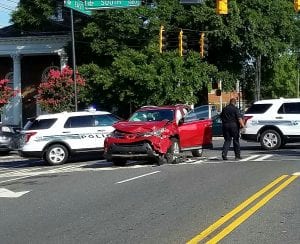Where a suspect admits to driving but is outside the car, “corpus delicti” comes into play in impaired driving accidents. But unless some other witness actually saw him driving, the State would lose. However, the rules are different for DUI cases. While some may think this is a major change in the law, it really is not. Because each case turns on its own facts, every case is different. So keep reading and then call us if you have any questions.
Corpus Delicti and DWI Arrests
While most folks think an admission is enough, the law used to require more. After all, the defendant says I did it. However, since the police did not see the crime, corpus delicti became an issue. But not anymore. In the recent North Carolina case of State v. Sawyers, Jason Sawyers and his girlfriend ran off the road and hit a tree. When the first officer arrived about five minutes after the crash, Sawyers was in the driver’s seat. Upon questioning by officers, he admitted that he was driving at the time of the accident. Nevertheless, at the end of the State’s evidence, Sawyers moved to dismiss the impaired driving charge. Rather than proving the car was “moving and running,” he was merely “sitting in the passenger seat of a wrecked car.”
Subsequently, Sawyers was found guilty and appealed arguing the State failed to present corroborative evidence he was the actual driver. Upon review, the court of appeals stated Sawyer’s arguments only showed “a common misunderstanding of the corpus delicti rule.” Rather, this rule deals with whether a crime occurred at all. And if a crime has occurred, a confession from the suspect is enough with sufficient corroboration.
 Case Analysis
Case Analysis
In this case, the Sawyers court explained that the State presented substantial evidence at trial. For example, the evidence showed the Dodge Charger was speeding down a curvy road just before the accident. In addition, the first officer on scene smelled alcohol on both Sawyers and his girlfriend. As a result, there was enough evidence to show impaired driving. Furthermore, the State could corroborate the defendant’s admission that he was the driver. First, several witnesses saw the defendant get out of the driver’s side after the crash. And finally, his girlfriend’s purse was found on the passenger floorboard. Consequently, the overall facts supported the defendant’s prior admission.
But what about other cases where there is no one to prove the defendant was driving? In cases where the officer does not see the driver behind the wheel, this case really does not change things. Furthermore, in truly impaired cases, a defendant’s confession may not be reliable. Hence the reason for the corpus delicti rule in the first place. As a result, the State must still show evidence in addition to the admission. For example, we had a case where a car struck the back of a cement mixer. When the police arrived, there was only our client standing by the car. Naturally, they assumed she was the driver. However, she said a friend drove and then ran away after the accident.
So who was driving? We don’t know, but then, it is not our case to prove. In the end, two airbags deployed which showed two people were in the car. Exactly who was behind the wheel is still in dispute. But always remember that the State has to prove you guilty, not the other way around.
Call us now and let’s take a look at some options.
